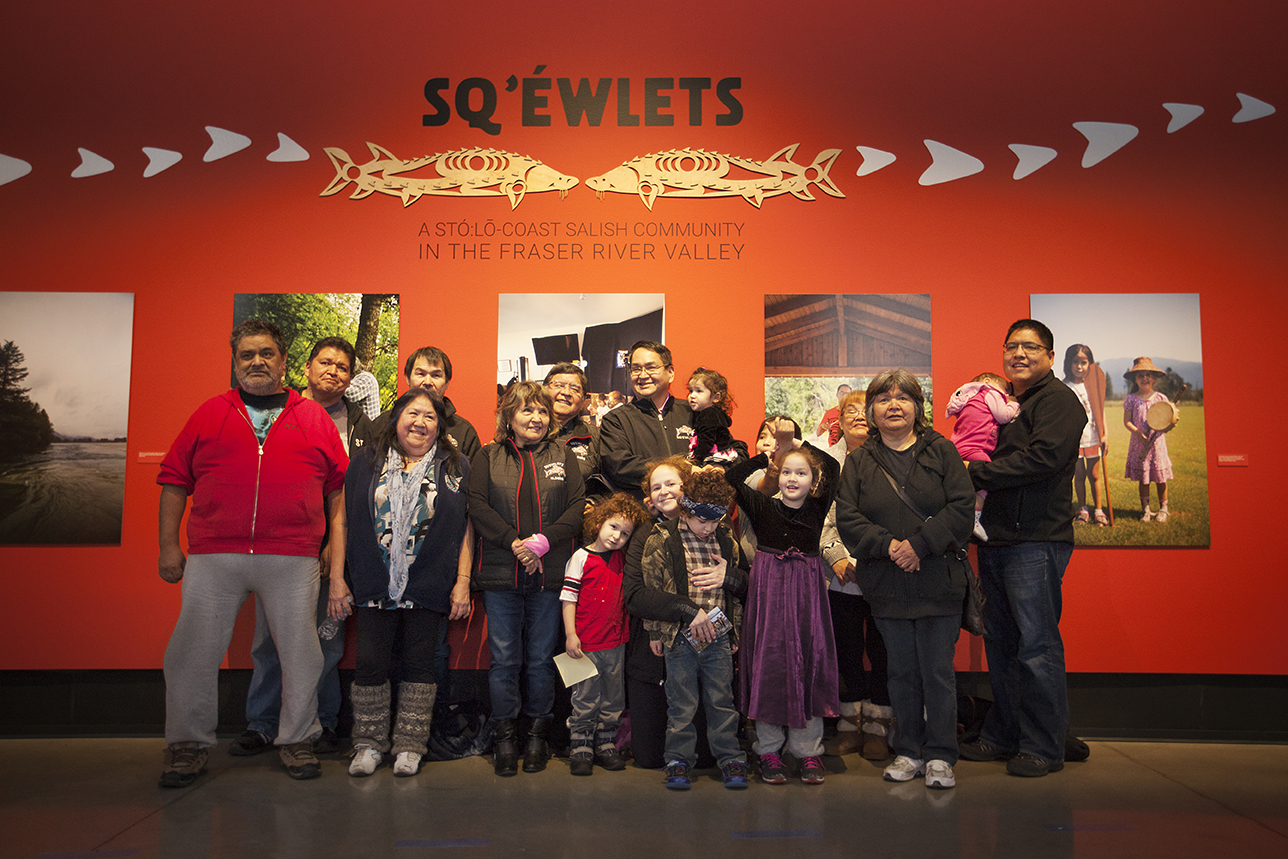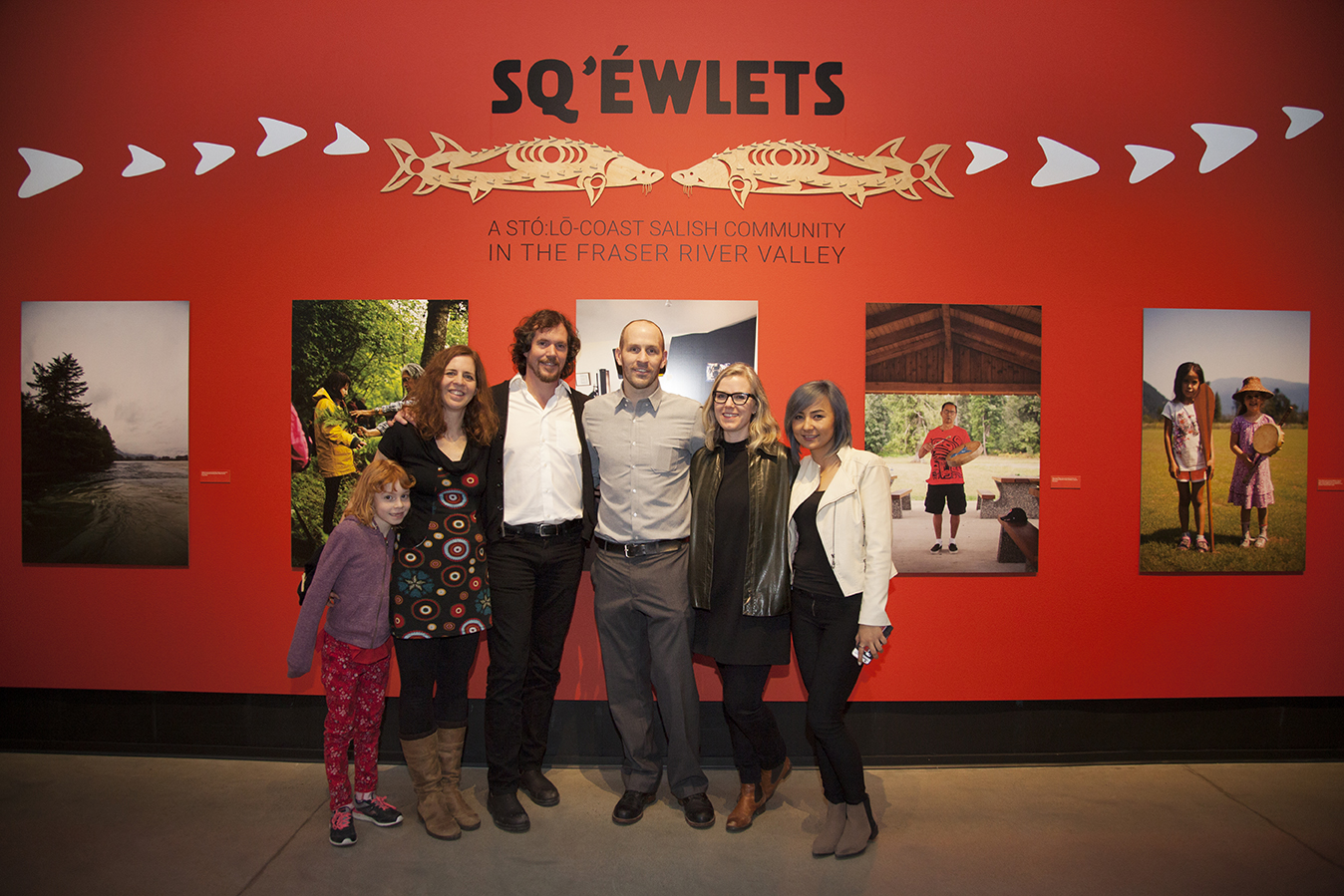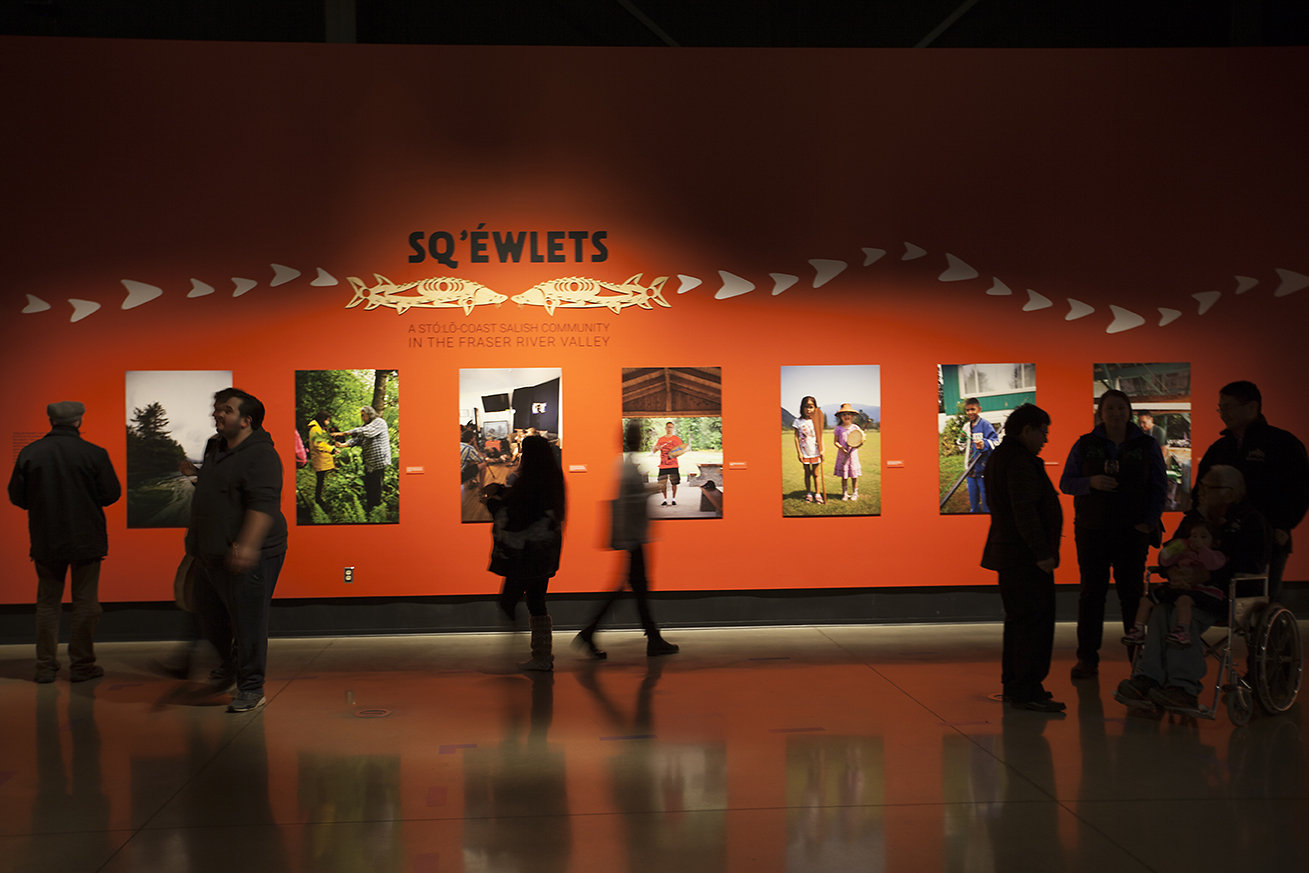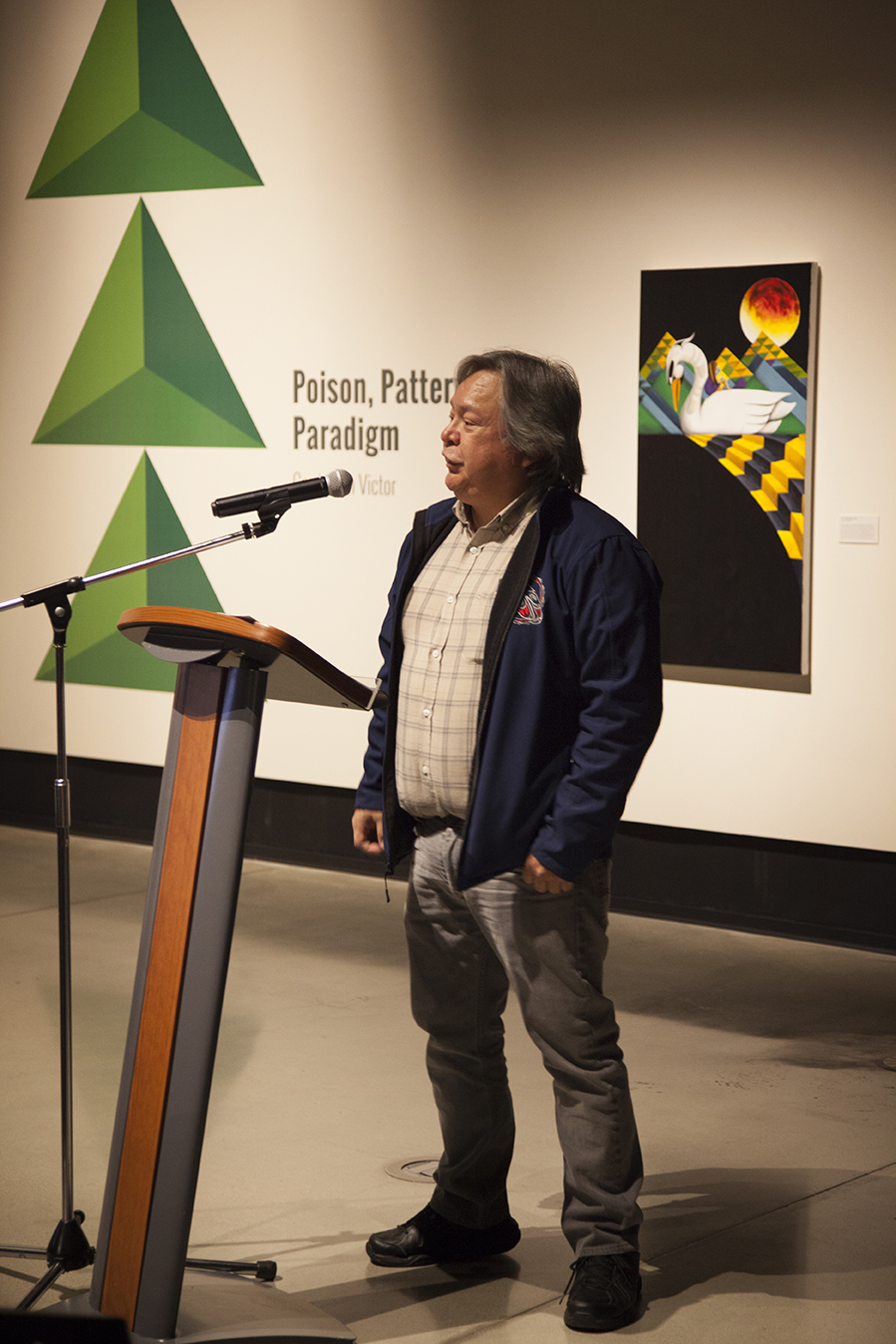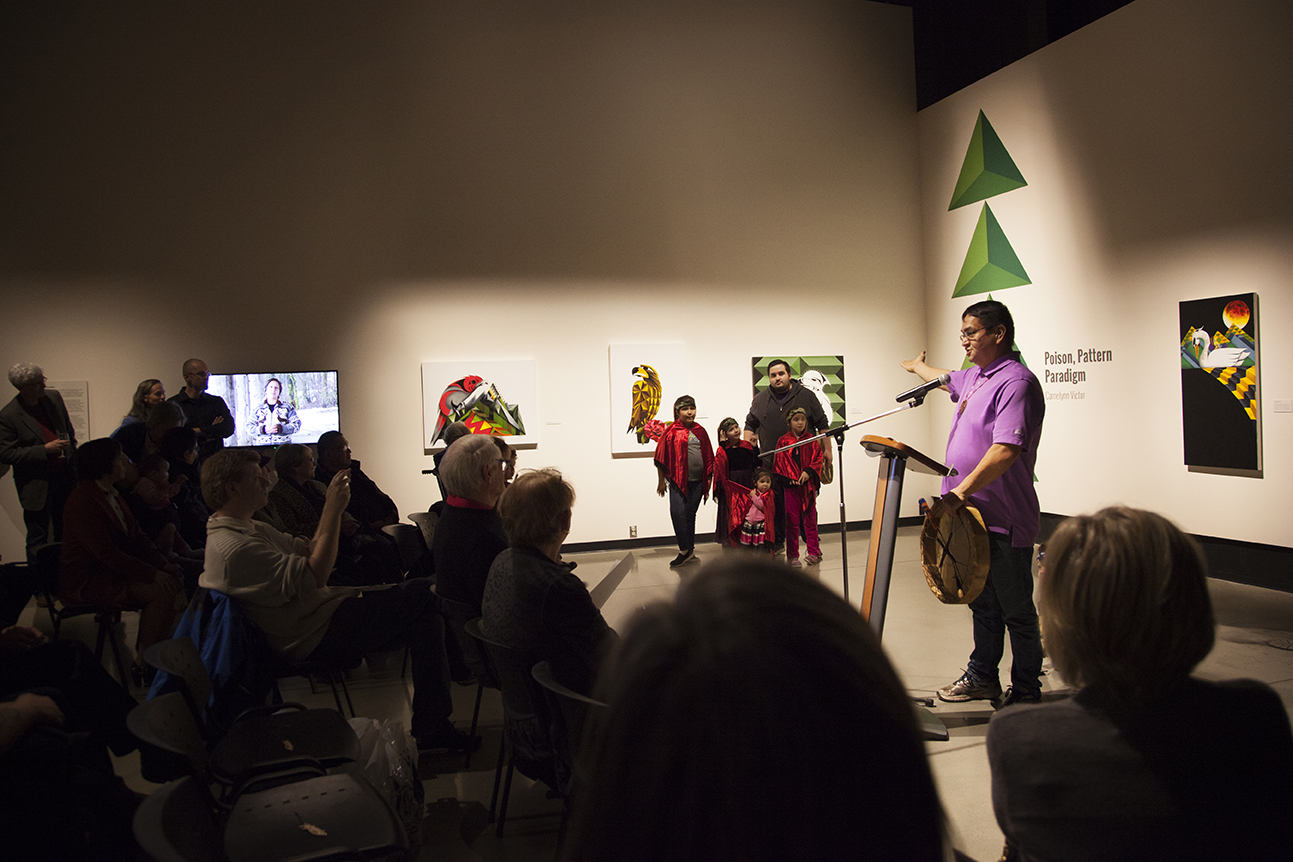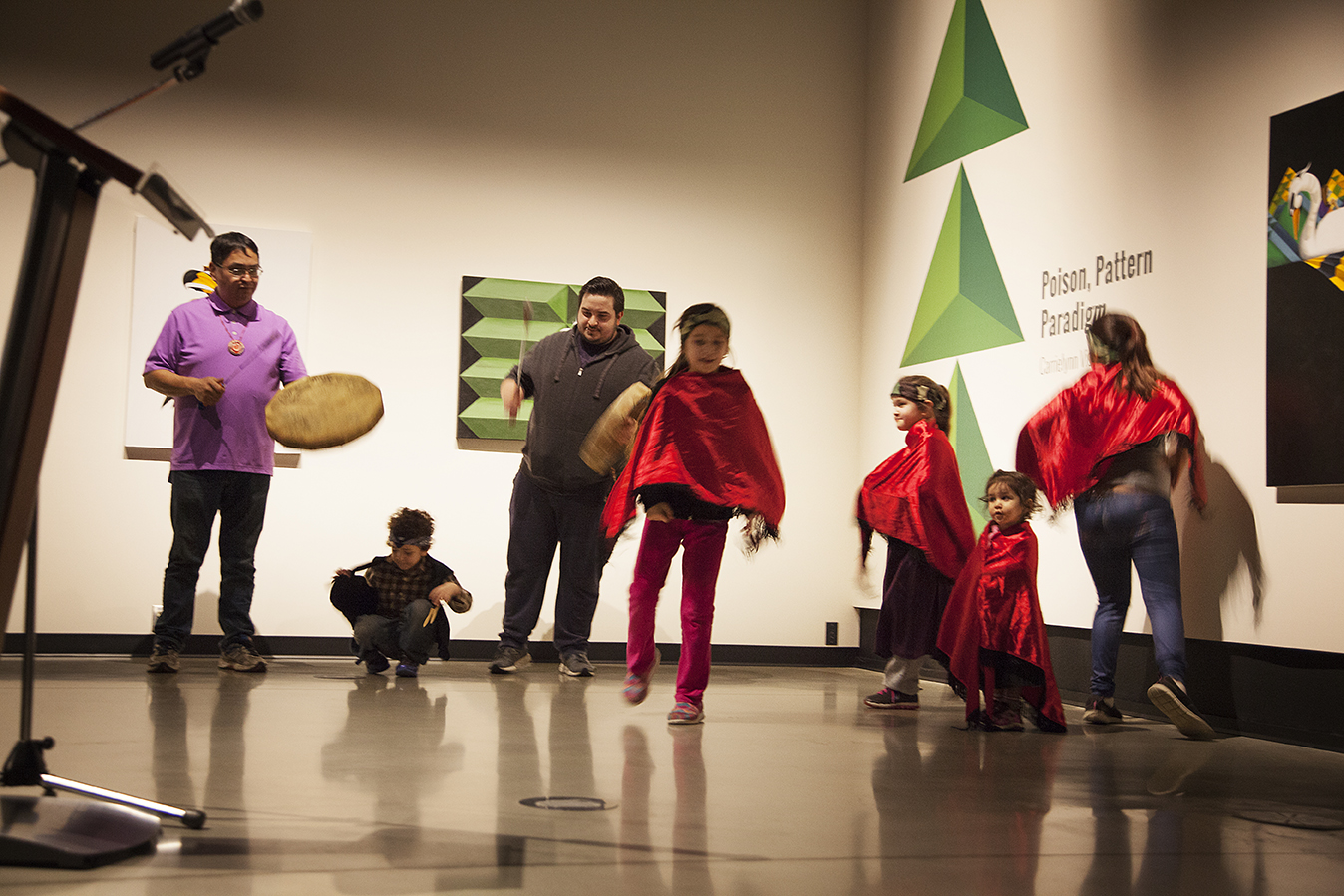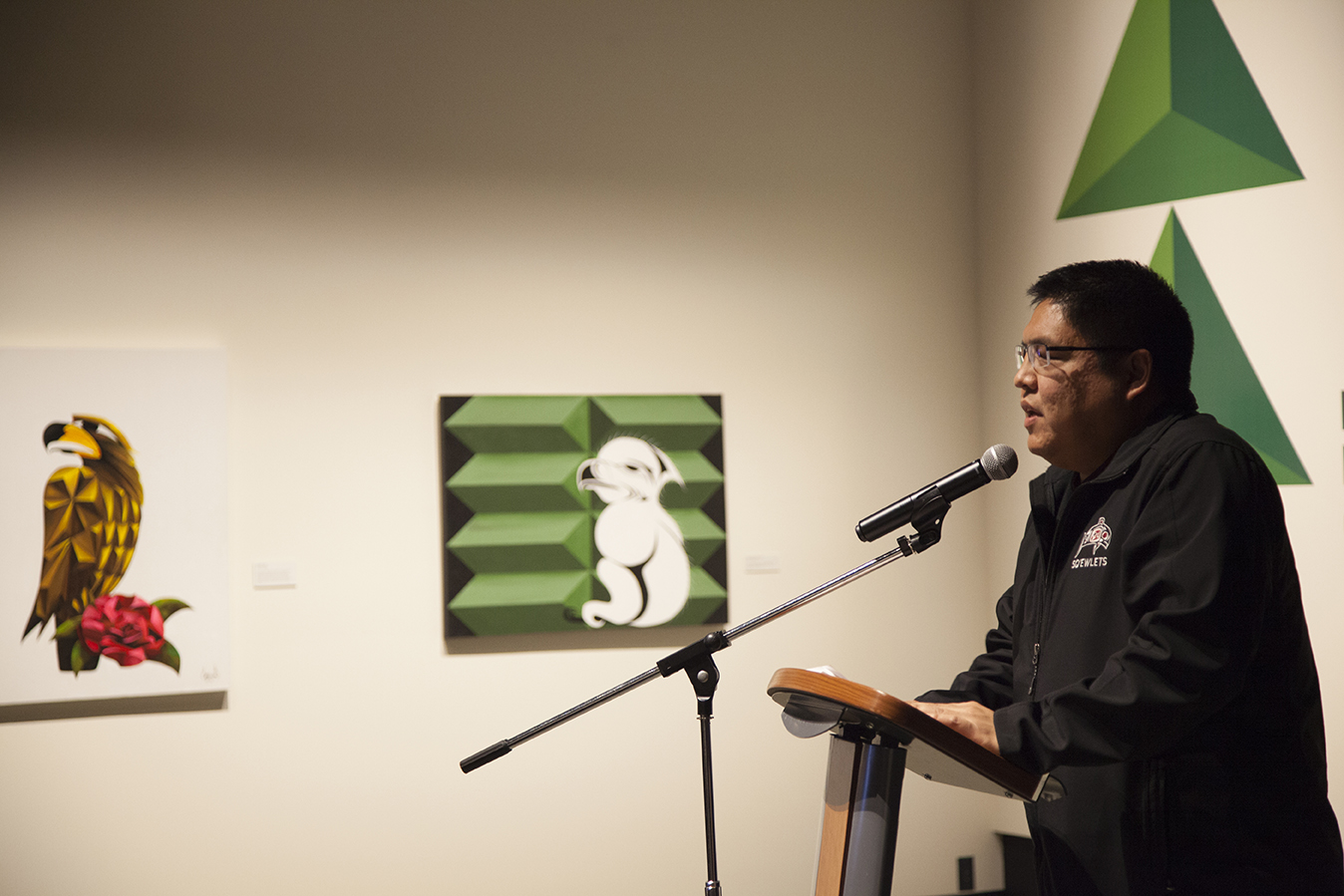The Making Culture Lab is thrilled to have worked in collaboration with the Stó:lo Research and Resource Management Centre, the Scowlitz First Nation, Ursus Heritage Consulting, and a diverse project team of archaeologists, software developers and designers. With funding from the Virtual Museum of Canada, we worked from 2012 to 2017 to produce an exhibit titled Sq’éwlets: A Stó:lo-Coast Salish community in the Fraser River Valley.
The virtual exhibit was launched in January 2017 at http://www.digitalsqewlets.ca/
*Winner of the 2018 MUSE Silver Award for Online Presence , American Association of Museums
* Winner of the 2017 Best Interactive Media Award, Society For Visual Anthropology Film and Media Festival (Washington DC)
Introduction to the Project (digitalsqewlets.ca) from Stó:lō Nation on Vimeo.
Our Old People tell us we have always been here, in S’ólh Téméxw, Our Land. As Stó:lō, we are People of the River, the Fraser River. We are also Xwélmexw, People of the Land. We are a nation of tribes joined together by our families, the land and the rivers.
Our tribal name ‘Sq’éwlets’ comes from the word ‘q’éw’, meaning ‘to go around the bend in the river’: the ancient home of our Sq’éwlets community is where the Harrison River rounds the bend and flows into the Fraser River. Sq’éwlets, in earlier times and documents, was spelled ‘Scowlitz’.
At the heart of this website is our Sq’éwlets history. We tell both our sxwōxwiyám and our sqwélqwel. These are our origin stories and the true stories that tell our history.”
– From Sq’éwlets: A Stó:lo-Coast Salish Community in the Fraser River Valley
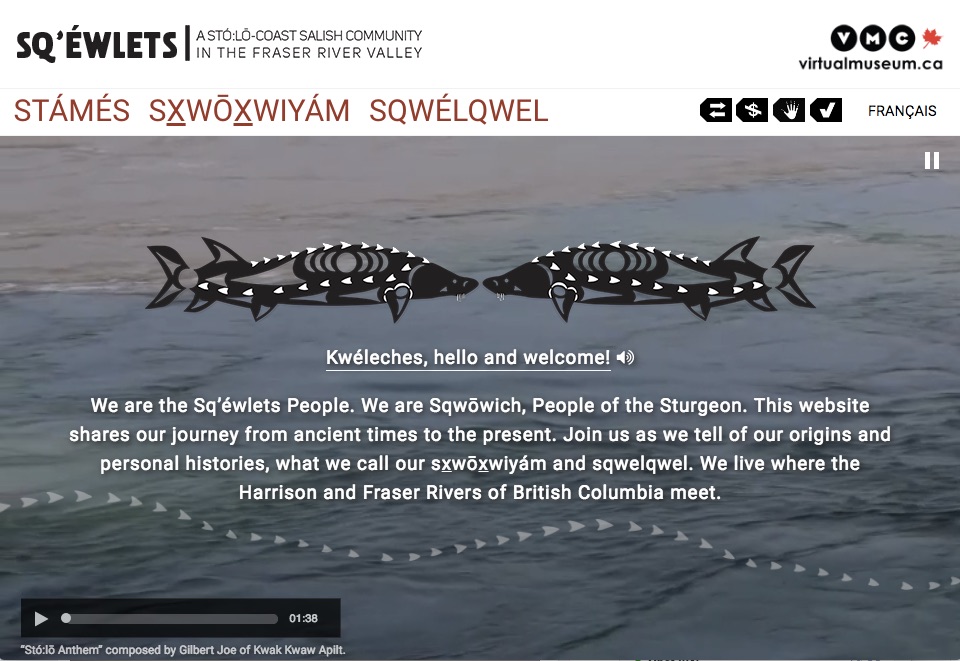
Sq’éwlets: A Stó:lō-Coast Salish Community in the Fraser River Valley is an online project that is the product of a major interdisciplinary, cross-cultural collaboration. It is the work of community leaders, anthropologists, historians, media specialists, and other content experts. It stems from a collaborative relationship formed 25 years ago between Chief Clarence Pennier of Sq’éwlets and archaeologists from the University of British Columbia and Stó:lō Nation. A partnership was formed in 1992 to excavate, examine, understand, and protect the ancestral archaeological resources at one of the Sq’éwlets community’s primary ancestral sites, Qithyil. Based on several decades of community-based archaeology, oral history, and ethnohistorical work, and the recent production of short video documentaries, the website presents a long-term perspective of what it means to be a Sq’éwlets person and community member today. It also resulted in a series of physical exhibitions at the Chilliwack Museum & Archives, the Reach Gallery Museum in Abbotsford, and the Bill Reid Centre at Simon Fraser University, Burnaby.
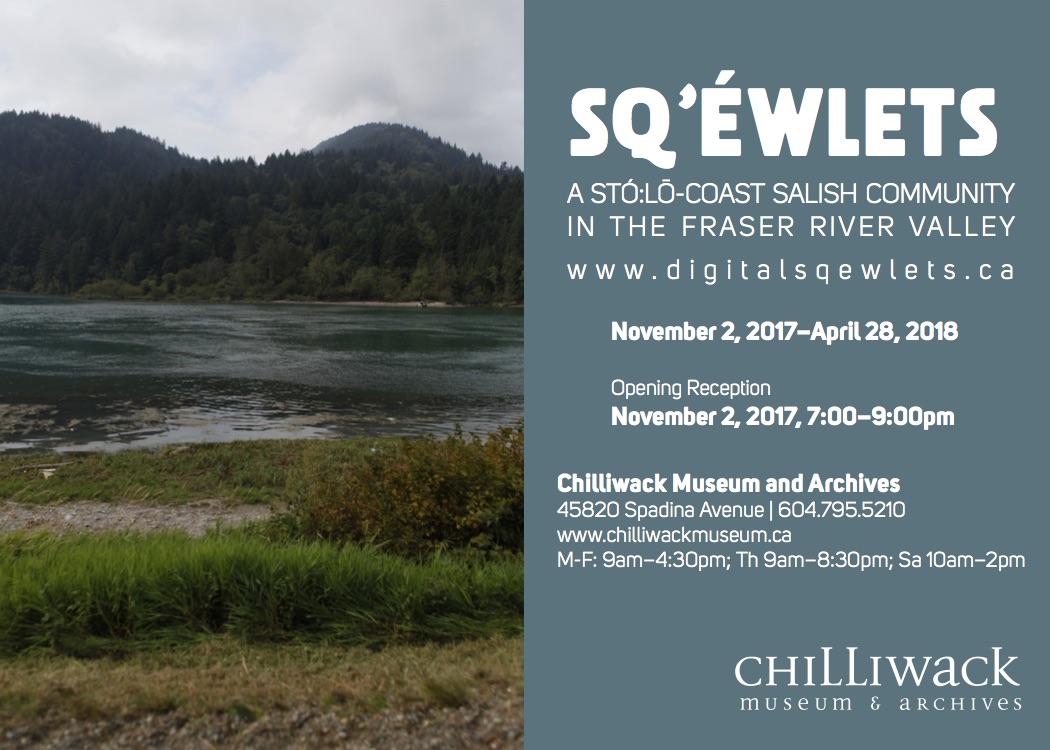
An exhibition inspired by the online exhibit is at the Chilliwack Museum and Archives Nov. 2, 2017 to April 28, 2018. View the Press Release here.
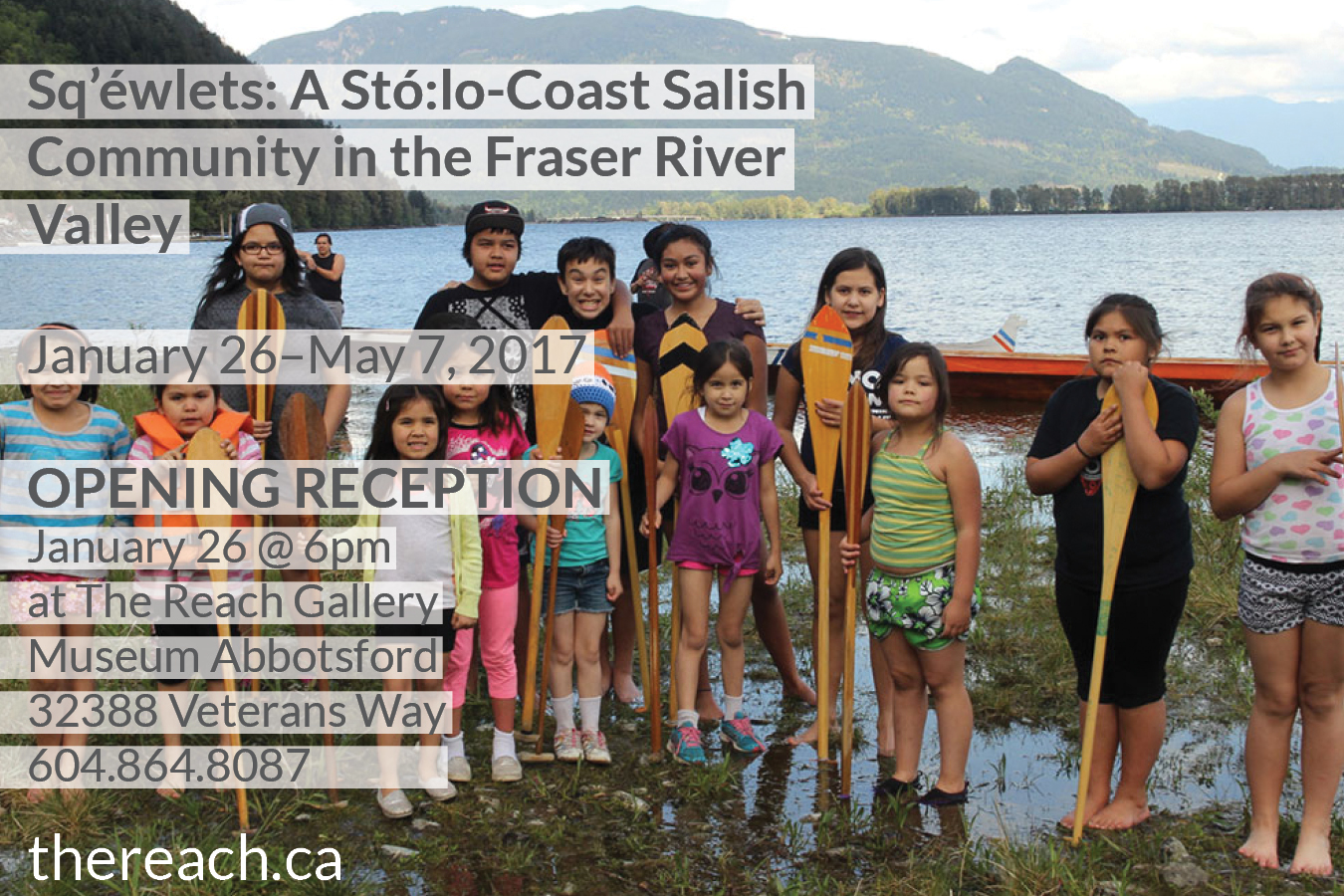
An exhibition celebrating the launch of the virtual exhibit was at the Reach Gallery Museum in Abbotsford B.C, from January 26th-May 7th 2017. See the Reach Gallery Press Release here.
Photographs taken at the opening of our exhibition at the Reach Gallery in Abbotsford, Jan. 26 2017.
We also recently published an article in the Journal of Social Archaeology:
Lyons, N., Schaepe, D., Hennessy, K., Blake, M., Pennier, C., Welch, J.R., McIntosh, K., Phillips, A., Charlie, B., Hall, C., Hall, L., Kadir, A., Point, A., Pennier, V., Phillips, R., Muntean, R., Williams, J. Jr., Williams, J. Sr., Chapman, J., Pennier, C. (2016)
Sharing Deep History as Digital Knowledge: An Ontology of the Sq’éwlets Website Project. Journal of Social Archaeology, Fall 2016 (DOI: 10.1177/1469605316668451), 26 pages. [pdf]
Join us on our Facebook page for updates on our progress, photos and more.
Project Description:
The Sq’éwlets: A Stó:lo-Coast Salish community in the Fraser River Valley exhibit is a community “biography” centering on the Scowlitz First Nation; a tribe of Stó:lō – “People of the River” in the Halq’eméylem language – located in the heart of the Fraser Valley in southwestern B.C. Our story is set at the confluence of the Fraser and Harrison Rivers: a geographical intersection that mirrors many of the current political, economic, social and cultural relations in Western Canada. Working with several partner heritage institutions, we propose to build an easily accessible, interactive, virtual exhibit that highlights how our history and archaeology is interconnected with the histories of both our Indigenous and our non-Native neighbours.
Visitors to the Sq’éwlets: A Stó:lo-Coast Salish community in the Fraser River Valley will: (1) learn about the important roles that archaeology, oral history and ethnohistory play in our community today, and (2) experience the 3,000 year-long history of our ancient and modern communities who continue to live along the shores of the Fraser and Harrison Rivers —120 km east of Vancouver’s urban core.
Our aim is to personify the places, objects, knowledge and history of Sq’éwlets spanning the past 3,000 years, with Sq’éwlets and Stó:lō youth as a primary audience. Central themes include leadership, education and knowledge, land use, society, and economy. Weaving these themes together, we show the interplay of profound continuity and tumultuous change during our region’s history. Presented in the local setting of Sq’éwlets, the exhibit will resonate across the country, touching on issues that are increasingly recognized as over-riding concerns, both within Canada and abroad.
An anchor for our exhibit is the Sq’éwlets archaeological site and its river and mountain setting. The Sq’éwlets site and its environs have been subject to some of the most comprehensive archaeological investigations in Western Canada during the past 20 years. Drawing on extensive archaeological artifact collections, maps, and photographs of the fieldwork that resulted in the discovery of ancient house remains and burials of our Sq’éwlets-Stó:lō ancestors, this exhibit will offer visitors an interactive view of how a long-term archaeological and heritage preservation project contributes to the social health of a Stó:lō-Coast Salish First Nation.
The archaeology of Sq’éwlets is framed within a rich ancestral tradition and deep knowledge of the cultural landscape. This project will tell our origin stories, speak to our Transformation sites and how our lands and waterways have Halq’eméylem place names, how our ancestors traveled throughout the region making their living from the bounty of the rivers, lakes and land, and how our ancestors were buried in marked cemeteries that are revered and cared for today. To help tell these stories, the website will include interactive timelines and maps, including Halq’eméylem place names and narratives associated with specific locations on the cultural landscape. We also present new perspectives on the repatriation of our ancestral remains taken from our cemeteries and until recently held in local museums, including some of our partner institutions. Now, with the guidance of Sq’éwlets andStó:lō elders they are making their journey home. This knowledge and heritage represents a significant body of biographical and historical information about our Sq’éwlets-Stó:lō community, yet commonly goes unrecognized in our neighbouring non-Native communities—even though there is often great interest in such information. We hope our project will raise public awareness of these important places and issues—with the aim of contributing to intercommunity communication.
Sq’éwlets: A Stó:lo-Coast Salish community in the Fraser River Valley will present interviews with Sq’éwlets community members and others who helped direct and participate in the research at the Sq’éwlets site. Visitors will hear directly from community members, archaeologists, historians, and fieldschool students who contributed to the project from 1992 to 2006. Stories of their involvement and relationships within Sq’éwlets archaeology will emphasize the profound effect this collaboration has had on shaping archaeological and historical studies in the region and beyond.
Dialogue between individuals and communities, from the local to national and international levels, will be encouraged by linking our virtual exhibit to the innovative RRN (Reciprocal Research Network). Many of our partner institutions are members of the RRN. The RRN will allow us to consolidate and provide access to the Sq’éwlets archaeological site materials in digital form.
People of the River: Sq’éwlets exhibit tells a story that is rooted in the material remains of an ancestral past and represents a starting point for commenting on our inter-cultural relations of today with the aim of improving our future.

Crossing at the confluence of the Fraser and Harrison Rivers. Photo by Reese Muntean, 2014.
Project Team
- Andy Phillips and Colin Pennier, Lead Contacts – Successive Chiefs of Sq’éwlets First Nation
- Betty Charlie, Cultural Advisor – Elder, Sq’éwlets First Nation
- Clifford Hall, Cultural Advisor – Elder, Sq’éwlets First Nation
- Lucille Hall, Community Organizer – Elder, Sq’éwlets First Nation
- Clarence (Kat) Pennier, Cultural Advisor – Elder, Sq’éwlets First Nation
- David M. Schaepe, Project Lead – Director & Senior Archaeologist, Stó:lō Research and Resource Management Centre, Stó:lō Nation
- Natasha Lyons, Project Manager – Director & Senior Archaeologist, Ursus Heritage Consulting
- Kate Hennessy, Media Lead – Associate Professor, School of Interactive Arts and Technology, Simon Fraser University
- Kyle McIntosh, Web Designer and Developer – Popgun Media
- Michael Blake, Archaeology Advisor – Associate Professor, Department of Anthropology, University of British Columbia
- John R. Welch, Project Advisor and Intellectual Property in Cultural Heritage Project Liaison – Associate Professor, Departments of Archaeology and Resource and Environmental Management, Simon Fraser University
- Doug Brown, Archaeology Advisor – Partner, Brown & Oakes Archaeology
- Dana Lepofsky, Project Advisor – Professor, Department of Archaeology, Simon Fraser University
- Naxaxalhts’i (Albert ‘Sonny’ McHalsie), Cultural Advisor – Cultural Advisor & Historian, Stó:lō Research and Resource Management, Stó:lō Nation
- Keith Carlson, Historical Advisor – Professor, Department of History, University of Saskatchewan
- Patricia Ormerod, Laboratory of Archaeology and RRN Liaison – LOA Manager, Department of Anthropology, University of British Columbia
- Aynur Kadir, Project Media Assistant – PhD Candidate, School of Interactive Arts and Technology, Simon Fraser University
- Reese Muntean, Project Media Assistant – PhD Candidate, School of Interactive Arts and Technology, Simon Fraser University
- Rachel Ward, Project Media Assistant — PhD Candidate, School of Interactive Arts and Technology, Simon Fraser University
- John Lutz, Historical Advisor – Associate Professor, Department of History, University of Victoria
Website Credits:
- Production: Natasha Lyons/Kate Hennessy/David M. Schaepe/Michael Blake (equally)
- Design: Kate Hennessy, Popgun Media, Sq’éwlets Advisors
- Programming: Popgun Media
- Media Preparation: Kate Hennessy, Aynur Kadir, Reese Muntean, Rachel Ward, Irine Prastio; Sxwōxwiyám Origins Video: Bear Image Productions, Sandra Bonner-Pederson and Diana Bonner
- Halq̓eméylem Audio: Viviane Williams and Naxaxalhts’i (Sonny McHalsie)
- Text Editors: Natasha Lyons and David M. Schaepe
- Text Contributors: David M. Schaepe, Natasha Lyons, Keith Carlson, Michael Blake, Kate Hennessy, John R. Welch, Naxaxalhts’i (Sonny McHalsie), and John Lutz; with additional text derived from the work of Dana Lepofsky, Sandra Morrison, Heather Myles, Doug Brown, Nicole Oakes, Jane Anderson, Chief Andy Phillips, Chief Casimir, Patrick Joe, Chief Kelapelatelia, Chief Scult-la-ment (Captain John), Chief Joe Hall, George Chehalis, Charles Hill-Tout, and Franz Boas
- Text copyediting: John Welch, Alix Shield and Hannah Turner
- Project Logo: Alicia Point
- Translation (English to French): Françoise McNeil and Marie Gagnon
- Sq’éwlets Advisors & Support: Lucille and Glenn Hall, Betty Charlie, Clifford Hall, Reg Phillips, Clarence Pennier, Vi Pennier, Johnny (Sonny) Williams Jr., Chrystal McCallum-Williams, Joey Chapman, Philamena (Cissy) Hulbert, Melanie TenBos, Elizabeth Terry, Richard Williams, Yvonne Hall, Alicia Point, John Williams Sr., Allan (Baldy) Williams, Tillie Chapman, Rita Leon, Maybel Point, Atawni Hall, Duran Hall, Cecilia Chapman, MaryAnn Hall, Darlene Williams, Nancy Pennier, Katina Pennier, Fran Charlie, Ken Caouette, Monica Caouette, Anita Hall, Nessa Terry, Jaysun Williams, Craig Hare, Jacqueline Fairclough, Stephanie Pennier, and Judith Kelly.
Full List of Project Credits here.



